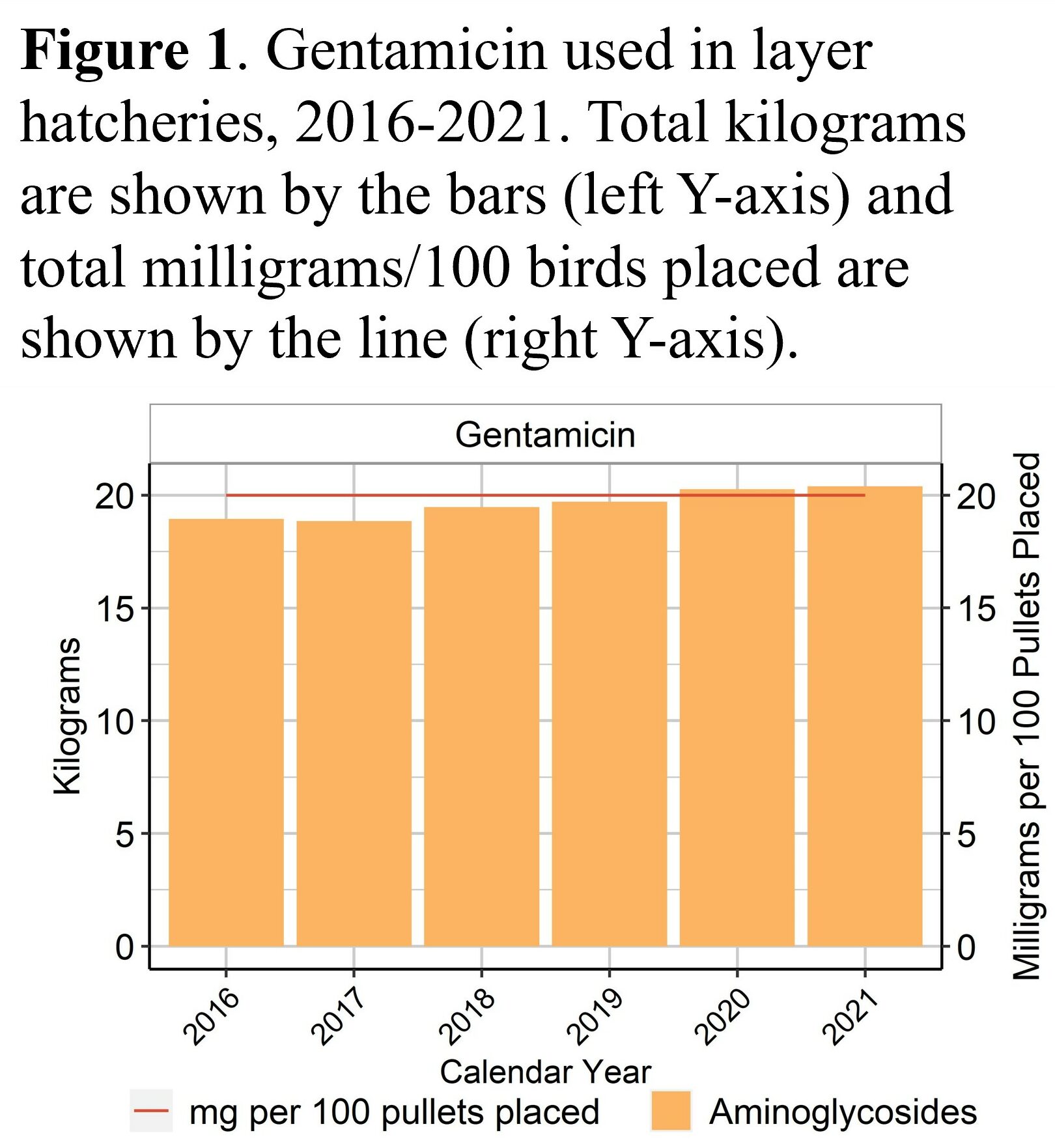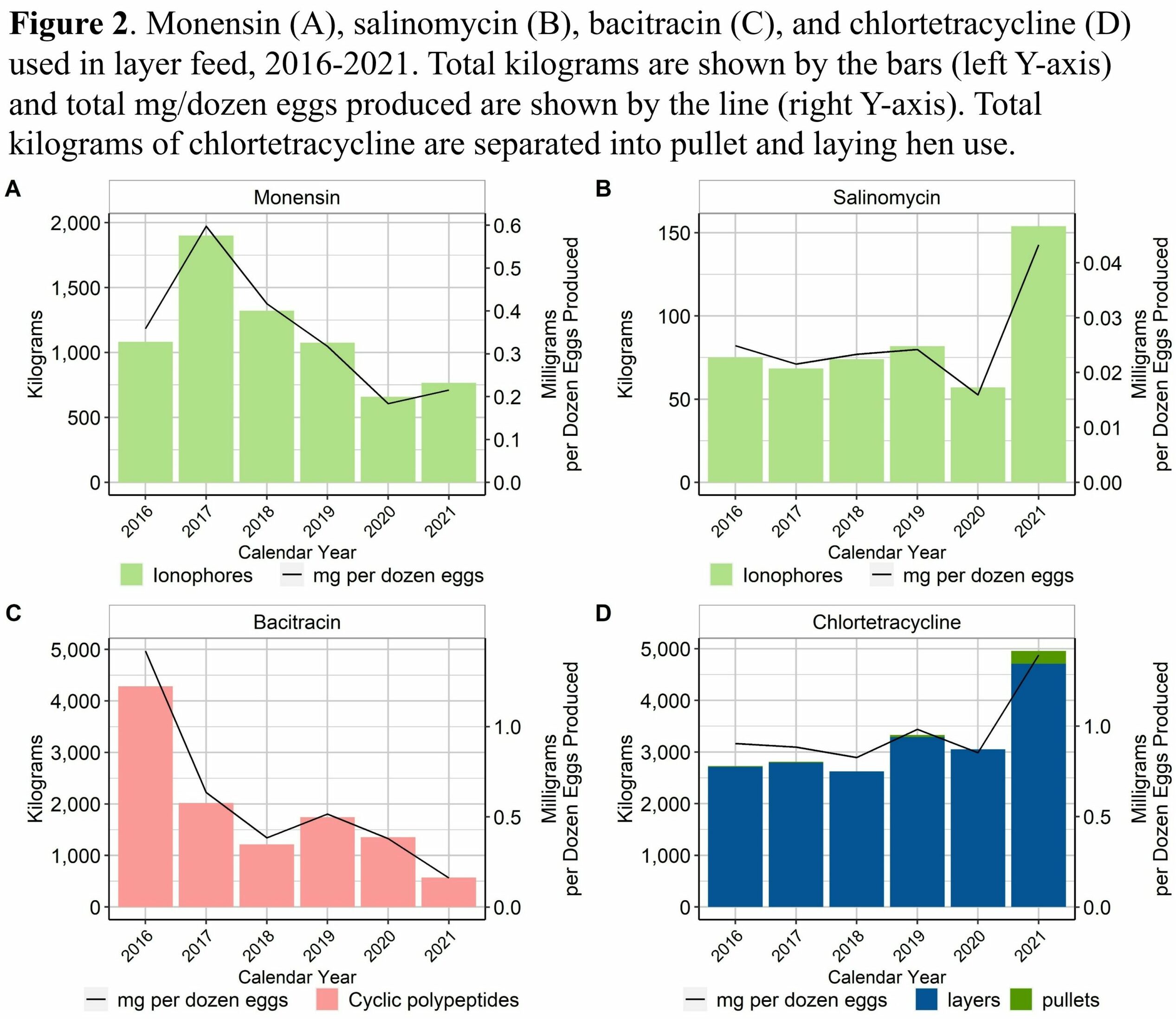 On-Farm Antimicrobial Usage in Layer Chickens
On-Farm Antimicrobial Usage in Layer Chickens
New Antibiotic Data Dashboard
We are proud to release a new interactive dashboard of on-farm antimicrobial use data for broiler chickens and turkeys.
Table egg companies participated voluntarily and represented a large percentage of the overall U.S. egg production
- The antimicrobial use datasets represent approximately 45% of eggs produced annually based on USDA:National Agricultural Statistics Service published numbers
- The antimicrobial use data that were submitted for 2021 include information on approximately 148,000,000 average hens in lay and 3,500,000,000 dozen eggs produced
2023
Estimates of on-farm antimicrobial usage in egg production in the United States, 2016–2021
Randall S. Singer
Frontiers in Veterinary Science. 2023; 10. https://doi.org/10.3389/fvets.2023.1135377
About Egg Production in the U.S.
- In the U.S. there are three primary phases of commercial egg production: hatchery, pullet growing farms and egg laying farms
- In the U.S., the majority of chicks purchased by egg companies are sourced from hatcheries that are owned and operated by day-old chick production companies
- Pullets are raised on farms owned by the production company or contract growers until the birds are approximately 15 to 18 weeks of age
- Birds are transferred to egg-laying barns which are often located on separate premises from the pullet farms. Hens will typically begin laying eggs around 20 weeks of age.
- The length of the productive life of a laying hen depends upon the number of egg production cycles utilized on the egg farm but typically ends when the hen is around 80 to 100 weeks of age
- Table egg production is similar to milk production, where the product for human consumption is produced on a daily basis. Most antibiotics that could be administered to layer hens have withdrawal periods that would prevent all eggs produced during this period from entering the food supply. This is one reason why little antibiotic is used in table egg production in the U.S.
Key Findings
Several key diseases were targeted by antimicrobial administration
- E. coli-related diseases affect the pullets and layers; chlortetracycline use is primarily for the treatment of E. coli diseases in layers.
- Necrotic enteritis, a clostridial disease of chickens, affects the pullets and layers and is the reason for most of the bacitracin use
Antimicrobial use in layer chickens
Hatchery Antimicrobials
- All chicks in the dataset received gentamicin in the hatchery (day 1 of age)
In-Feed Antimicrobials
- Most antimicrobial use in layers is via the feed
- The only medically important antibiotic used in layer hens for treatment and control of disease in this dataset was chlortetracycline (CTC), used in part because it has a zero-day withdrawal, meaning that there is no loss of eggs during the treatment period
- CTC was only administered via the feed of pullets and hens
- The majority (>95%) of CTC was used in the laying hens for treatment of disease
- Less than 0.2% of total hen-days were exposed to CTC
- Bacitracin, a not medically important antimicrobial, was used in both pullets and layers for treatment of necrotic enteritis
- Monensin and salinomycin are the only ionophores approved for use in egg production and only for the pullet phase of production
Water-Soluble Antimicrobials
- Almost no water-soluble antimicrobials were used during this six-year period, with only two pullet flocks in the dataset being treated with lincomycin
Antimicrobial use in U.S. egg production is minimal
- There are no approved water-soluble antimicrobials for use in U.S. layers that have a zero-day withdrawal; having an approved water-soluble antimicrobial with zero-day withdrawal might improve the ease and efficacy of antimicrobial administration
Acknowledgments
This project is funded with multiple annual grants from the U.S. Poultry & Egg Association. The project was also partly supported from 2016 to 2023 under a cooperative agreement with the U.S. Food and Drug Administration (U01FD005878). This ongoing monitoring program would not be possible without the voluntary participation of layer, broiler chicken and turkey companies of the U.S. as well as support from the National Chicken Council, National Turkey Federation, United Egg Producers.
Contact Us
Thank you for your interest! We are pleased to receive inquiries from potential collaborators, journalists, and those with questions about our research.


